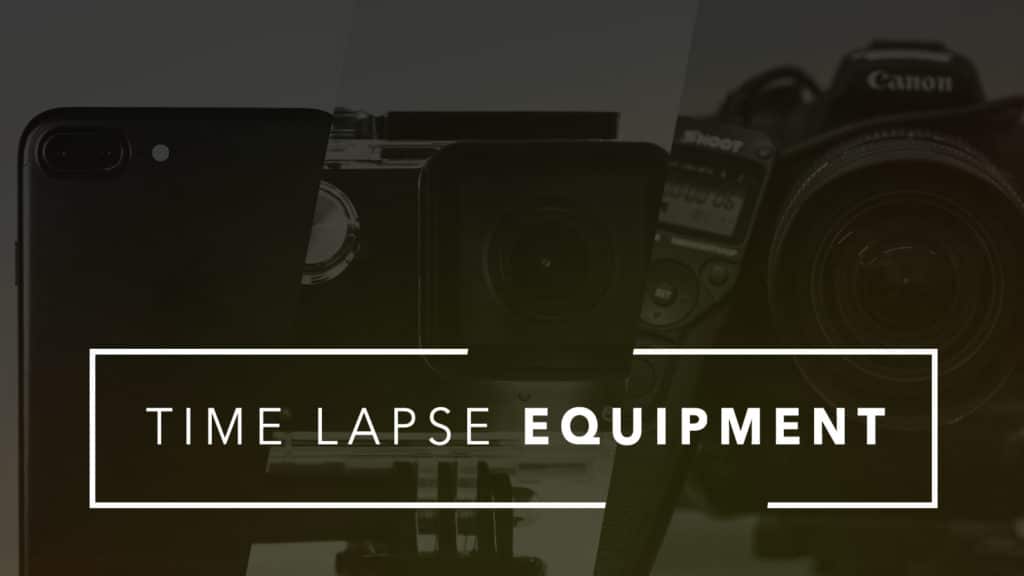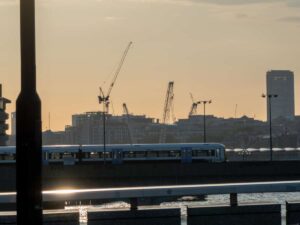Welcome to the second part of this four part guide on how to create time lapse films. In this second part of the guide, we’ll cover the basics of time lapse equipment, covering everything from DSLR to Smart Phone options. We’ll also talk about the equipment that we as a film company use to capture time lapse films. Come back next week to learn more about how to set up your time lapse capturing equipment for shooting!
Selecting TIME LAPSE equipment
The kit you use to shoot your time lapse will invariably come down to budget and practicality factors trading off against image quality and desired application. In most basic cases, you’ll need a camera, a way to support & stabilise that camera and a way to get it to take your required sequence of frames. The example we’ll use below is the standard approach we take when going out to film our ‘on-the-ground’ shoots that require time lapse footage, but it’s worth having a quick look at some alternative methods of capturing time lapse. The kit you use to shoot your time lapse will invariably come down to budget and practicality factors trading off against image quality and desired application. In most basic cases, you’ll need a camera, a way to support & stabilise that camera and a way to get it to take your required sequence of frames.
• Smart phones – Advances in technology have allowed cameras to become physically smaller and have higher image quality. Higher quality image capture and easy sharing has supported platforms like Facebook and Twitter, and given rise to others like Instagram and Pinterest. It has also brought the capability of capturing and sharing time lapse with relative ease, all from a single, portable device. This makes it the most easy to use time lapse equipment, although the trade off with come with shooting options and quality. Your phone may even already be equipped with software to help you take time lapses, but Instagram’s ‘Hyperlapse’ is just one app worth trying out to turn your phone into a time lapse camera on the go.
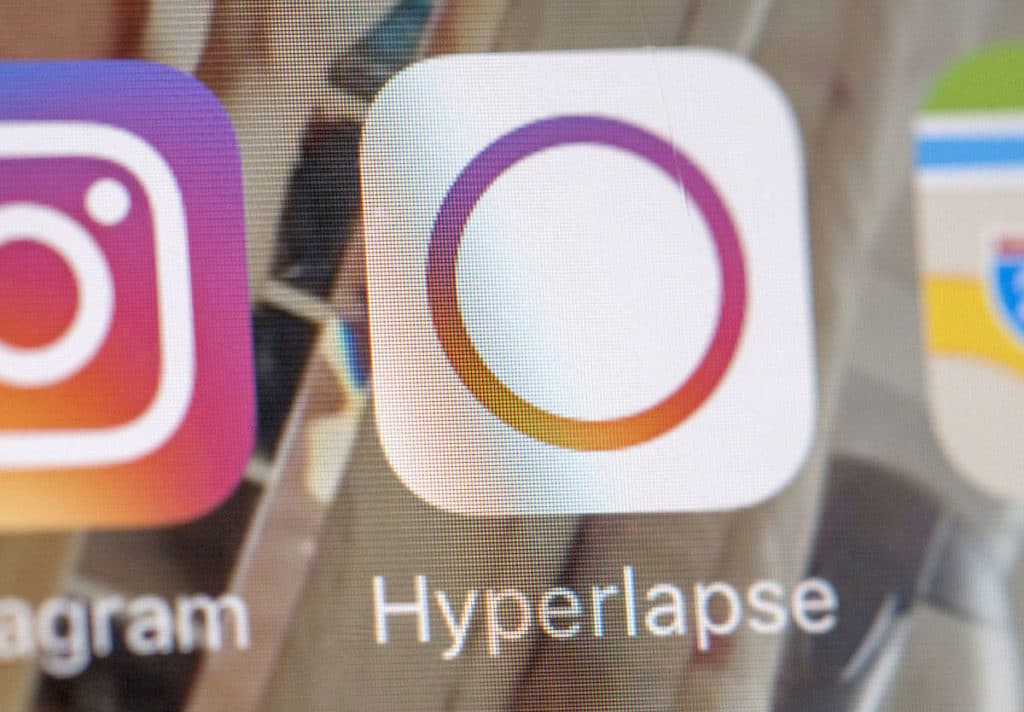
Instagram’s ‘Hyperlapse’ app makes for a convenient time lapse tool on your smartphone
• ‘Point and shoot’ cameras – A much cheaper than our choice of time lapse camera (DSLRs, below) but with significantly fewer features. Compact cameras can still offer excellent image quality and therefore shouldn’t be discounted as a means to shoot time lapse. As with any other time lapse equipment set up you will need a tripod or similar way to fix your camera to a point from which to shoot. Like smart phones, some compact cameras now come to the market with in-built time lapse options so if you’re using a point and shoot have a look. It might be worth checking for firmware updates for your camera that will allow you to set up intervals for time lapse. Many robust action cameras such as the GoPro range offer time lapse settings right out of the box.
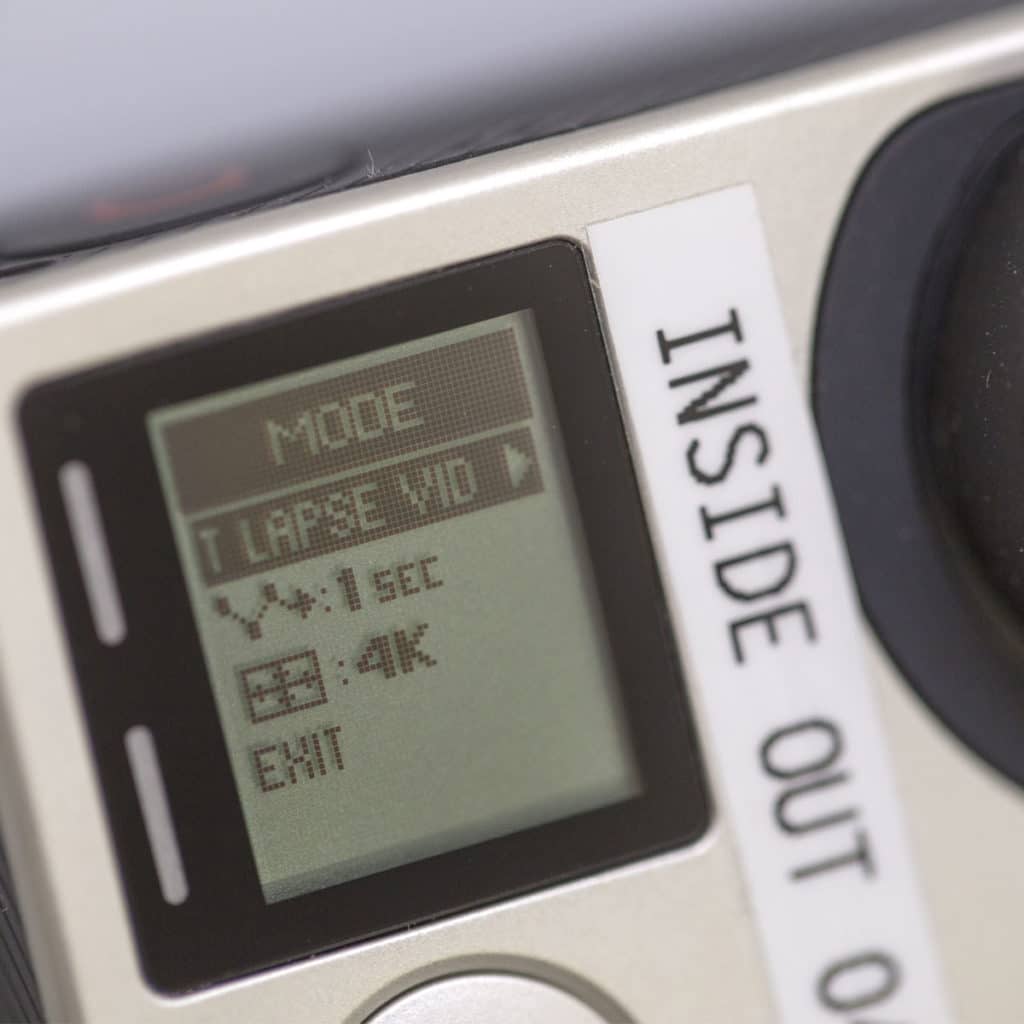 Selecting time lapse settings in the GoPro Hero4’s shooting mode menu
Selecting time lapse settings in the GoPro Hero4’s shooting mode menu
• DSLR cameras – While relatively expensive compared to some other options, digital SLR cameras give the photographer near uncompromised creative control over capturing stills and, by extension, time lapse. In addition to planning where you will take your time lapse and how long for (in step 1.), using a DSLR* gives you more choices and creative opportunities when it comes to time lapse equipment. When using a DSLR you’ll have a changeable lens along with adjustable aperture, shutter and ‘film speed’ options, not to mention generally they have a good battery life. Alternately, unlike most other time lapse equipment options mentioned here, they can happily run from a more permanent power source for long term time lapse projects.
*All of our examples feature digital cameras simply for cost and practicality reasons. You could of course shoot time lapse on a film camera but it would work out very expensive in comparison. Processing/editing the film/video would also take so very much longer.
At Inside Out Time Lapse Productions each of our ‘on-the-ground’ filming kits is supported by four Canon 1200D or 1300D DSLRs ready to set up with either a wide-angle or tele lens according to the subject matter to be time lapsed.
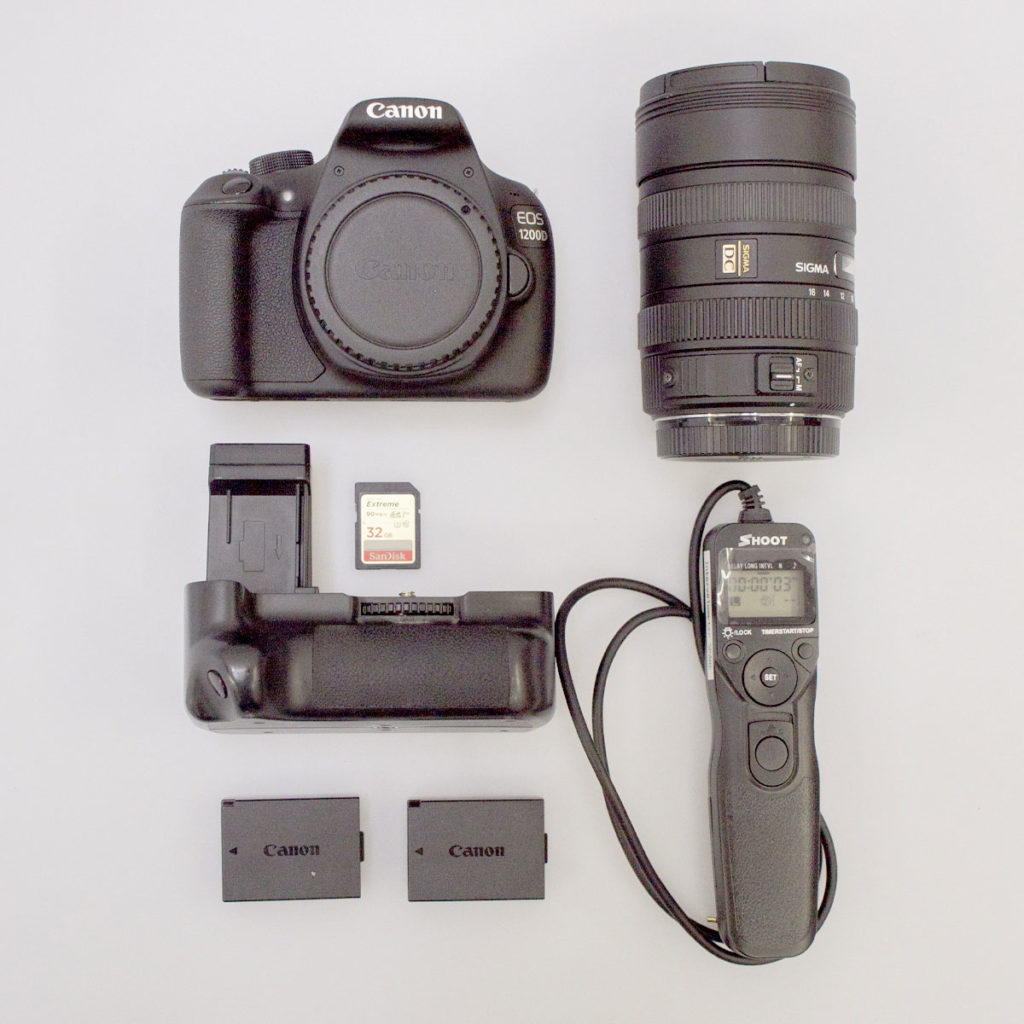 An example of our typical time lapse set-up: Entry level DSLR plus battery grip, battery cells, SD card, intervalometer and lens
An example of our typical time lapse set-up: Entry level DSLR plus battery grip, battery cells, SD card, intervalometer and lens
You could of course use much higher end cameras (we’re talking examples like the Canon EOS 5D, 6D and 7D series’, Nikon D810 and D750 cameras, Pentax’s K-1 etc) and if you have the budget and reason to (for a particular feature, say) then go for it. But we find that entry level DSLRs offer a great compromise between cost, function and quality.
Many manufacturers will have firmware updates or plug-ins that will allow you to install time lapse settings software onto your camera. One could even trigger your photograph intervals from a laptop application plugged in to your DSLR at your location. Often we set up our cameras in unique, unusual and/or hard to reach places, meaning once the time lapse has begun our cameras are not easily accessible. As such we favor the use of intervalometers (often called ‘remote shutters’). These relatively inexpensive cabled or sometimes wireless control units allow you to set intervals between taking shots as well. They also have other features such as delaying the first shot or stopping after a certain frame number. They also have the added benefit of being more easily reached should you need to adjust a setting without disturbing the camera.
The beauty of time lapse is in capturing and watching something move/change/develop/grow over a long period of time. While more advanced techniques can successfully combine camera movement with time lapse capture, it is best to start with having your camera in a fixed position. Options include tripods, small ‘table top’ tripods, or for fixing your camera to things like poles or bars solutions like Joby’s Gorilla Pods or Manfrotto’s Magic Arm with a K-clamp are ideal.
We hope that you’ve learned more about different time lapse equipment options. Click here to read the third of our four part series on how to create time lapse films. This will focus on how to set up your equipment for shooting time lapse.
[contact_cta]

